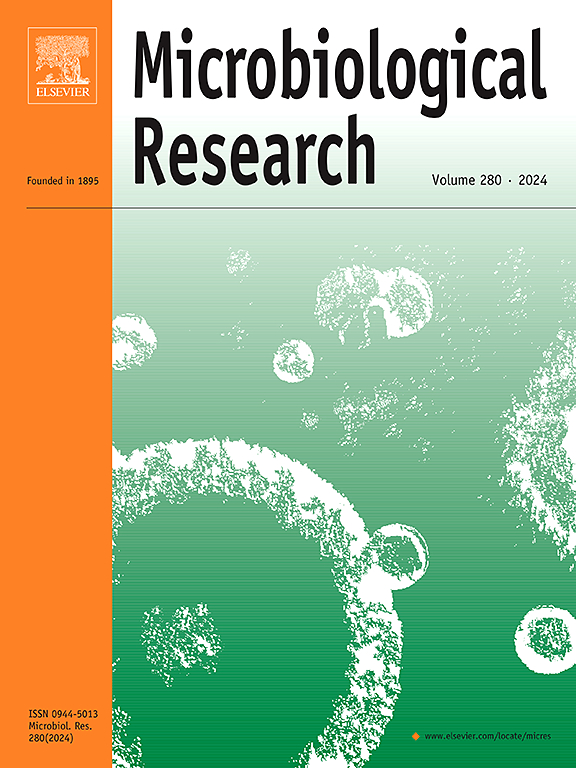补充了各种水囊的平面培养液中红球菌应激基因的表达。
IF 6.1
1区 生物学
Q1 MICROBIOLOGY
引用次数: 0
摘要
研究红球菌(Rhodococcus erythropolis)的应激反应具有重要的科学意义,因为这种微生物被广泛用于石油污染场地的生物修复,对环境生物技术至关重要。此外,与革兰氏阴性微生物相比,有关革兰氏阳性石油降解微生物抗应激和适应污染物影响的分子机制的数据要少得多。本研究评估了在癸烷、十六烷、环己烷、苯、萘、蒽和柴油的作用下,soxR、sodA、sodC、oxyR、katE、katG、recA、dinB、sigF、sigH 基因转录水平的变化。从目标基因的表达变化来看,碳氢化合物作为主要碳源会对红腹灰杆菌细胞造成氧化应激,导致 DNA 损伤。这表现在编码抗氧化酶(超氧化物歧化酶和过氧化氢酶)、SOS 反应、DNA 聚合酶 IV 和 RNA 聚合酶 SigH 和 SigF 的基因转录增强。因此,在碳氢化合物存在的情况下,过氧化氢酶基因(katE 和 katG)的转录可能主要由 sigF 调节因子协调。本文章由计算机程序翻译,如有差异,请以英文原文为准。
Expression of Rhodococcus erythropolis stress genes in planctonic culture supplemented with various hydrocabons
Studying Rhodococcus erythropolis stress response is of significant scientific interest, since this microorganism is widely used for bioremediation of oil-contaminated sites and is essential for environmental biotechnology. In addition, much less data was published on molecular mechanisms of stress resistance and adaptation to effects of pollutants for Gram-positive oil degraders compared to Gram-negative ones. This study provided an assessment of changes in the transcription level of the soxR, sodA, sodC, oxyR, katE, katG, recA, dinB, sigF, sigH genes in the presence of decane, hexadecane, cyclohexane, benzene, naphthalene, anthracene and diesel fuel. Judging by the changes in the expression of target genes, hydrocarbons as the main carbon source caused oxidative stress in R. erythropolis cells, which resulted in DNA damage. It was documented by enhanced transcription of genes encoding antioxidant enzymes (superoxide dismutase and catalase), SOS response, DNA polymerase IV, and sigma factors of RNA polymerase SigH and SigF. At this, it was likely that in the presence of hydrocarbons, transcription of catalase genes (katE and katG) was coordinated primarily by the sigF regulator.
求助全文
通过发布文献求助,成功后即可免费获取论文全文。
去求助
来源期刊

Microbiological research
生物-微生物学
CiteScore
10.90
自引率
6.00%
发文量
249
审稿时长
29 days
期刊介绍:
Microbiological Research is devoted to publishing reports on prokaryotic and eukaryotic microorganisms such as yeasts, fungi, bacteria, archaea, and protozoa. Research on interactions between pathogenic microorganisms and their environment or hosts are also covered.
 求助内容:
求助内容: 应助结果提醒方式:
应助结果提醒方式:


